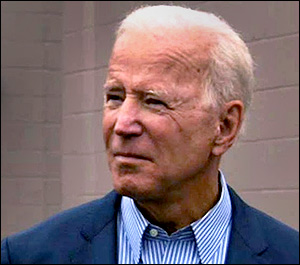By Jim Ellis — Thursday, Oct. 19, 2023
President
RFK Jr.: Independent Impact — Since Robert F. Kennedy Jr. announced that his presidential candidacy would move to the Independent line and away from the Democratic primary, it has been an exercise to predict which states his candidacy might detract from either President Joe Biden or former President Donald Trump.Though Kennedy is stating he will try to win the race as an Independent, the chances of him doing so are slim. Ross Perot, on the Reform Party ballot line in 1992, was the last minor party candidate who was significant in a modern-era presidential race. Perot received 18.9 percent of the national popular vote but won no states, meaning zero electoral votes. Bill Clinton won the 1992 election with 43.0 percent nationally and 370 electoral votes.
The last minor party candidate to secure electoral votes was at the time former Alabama Gov. George Wallace running on the American Independent Party line, back in 1968. He carried five states (Alabama, Arkansas, Georgia, Louisiana, and Mississippi) for a total of 46 electoral votes. Richard Nixon won the ‘68 election with 43.4 percent of the popular vote and 301 electoral votes.
Assuming Kennedy also fails to win a state, there are certain places where his candidacy could still affect the outcome. This means capturing enough votes to tip a state from one of the major party candidates to the other. Using the 1992 race as a model for 2024 because of the minor candidate factor, overlaid with current voting trends, it appears that six states could be in the “Kennedy tip” category.
Such includes four from Biden to Trump; one from Trump to Biden; and one Trump “gettable” state to Biden. Thus, the Kennedy influence could be enough to slightly tip the national general election to Trump or into the House of Representatives to break a tie.
The four states that could flip to Trump are Arizona, Georgia, Nevada, and New Hampshire. In 1992, former President George H.W. Bush carried Arizona, and to win this election Trump is virtually forced to also reverse his fortune from 2020 and carry the Grand Canyon State. In ’92, Bush won the state with a two-point margin over Clinton, while Perot attracted 23.8 percent. While the ’92 race occurred decades ago, the in-play states still exhibit the potential to provide a large number of votes to a minor party or Independent candidate, especially one with universal name identification.
Georgia is a state that must go to Trump if he is to have any chance of winning the general election. In 1992, Clinton carried the Peach State by less than one percentage point, while Perot garnered 13.3 percent of the vote.
Clinton carried the Silver State of Nevada with a three-point margin while Perot’s vote total was 26.2 percent. Should Kennedy also finish within the Perot vote total realm, it is reasonable to believe that more than a net three percentage point margin would come from President Biden’s total, which would likely be enough for Trump to win Nevada and add six electoral votes to his total.
New Hampshire, rated as one of the nation’s states with the greatest swing potential, also falls into the Kennedy tip category. Clinton defeated President Bush here by 1.3 percentage points in ’92, with a 22.6 percent vote factor for Perot. Again, if Kennedy were able obtain well over 20 percent in New Hampshire, a New England state with a strong history of supporting his family, that could tip the state’s four electoral votes to Trump. Only two points more from Kennedy’s aggregate would have to come from Biden’s total for Trump to win the state.
Alaska, however, with its Ranked Choice Voting system, could be a state that Kennedy’s presence could tip to Biden. The Ranked Choice Voting system has played to the Democrats’ favor here, and it may so again should the Kennedy factor be high enough to force the race leader below the 50 percent mark in order to jump-start the ranking procedure.
Finally, Wisconsin will be a major state in the ’24 election. In 1992, it also demonstrated a higher than average vote for Perot (21.5 percent). Clinton carried Wisconsin with a 4.3 v percentictory margin. These totals suggest that if Kennedy finished in the same realm as Perot in the Badger State, that would likely help President Biden.
The above scenario, assuming all other states voted as they did in the 2020 presidential race, would actually create an electoral college tie. Adding Arizona, Georgia, Nevada, and New Hampshire and giving up Alaska would give both candidates 269 electoral votes, meaning the election would be decided in the House of Representatives.
Kennedy’s performance in these and several other states could well change the trajectory of the entire presidential race and becomes just one more unique factor in this so far unpredictable campaign.







 In the two North Carolina special elections that were decided on Tuesday night, the winning Republican candidates exceeded the published polling projections. The same pattern also occurred in Pennsylvania back in late May when Rep. Fred Keller (R-Middleburg), while predicted to win comfortably, garnered a considerably larger vote percentage than projected when he scored a 68 percent special election victory.
In the two North Carolina special elections that were decided on Tuesday night, the winning Republican candidates exceeded the published polling projections. The same pattern also occurred in Pennsylvania back in late May when Rep. Fred Keller (R-Middleburg), while predicted to win comfortably, garnered a considerably larger vote percentage than projected when he scored a 68 percent special election victory.